Fiber is an essential carbohydrate that your body needs to keep your bodily functions working correctly. While most carbohydrates are quickly broken down by your digestive system into sugar, Fiber passes through the body undigested. Fiber is excellent as it helps regulate the body’s sugar levels. This is essentially one of the best foods to overload in when you are dieting as it keeps your hunger pangs abated. (1)
When you are looking to lose weight, one of the lifestyle changes that you have to make is to pay attention to what you eat. Aside from lessening your food intake, it should also be evident that you should eat healthier.
One of the items that you have to focus more on is Fiber. Sticking to a high fiber diet will fill you up without all the calories while also keeping your digestive system running smoothly. (See: How Much Fiber Should You Have Every Day?)
Given the benefits of Fiber to your body, you should definitely increase your fiber intake. (See: Benefits of Fiber) Here is a quick reference on which high fiber food so you know which to get the next time that you are shopping for food.
Fruits High In Fiber
Avocados

Avocados win as one of the fruits with the highest fiber content. Eating 100 grams of Avocado in one day provides your body with a third of the amount of Fiber that you need daily. (2)
Surging in popularity, Avocados are now getting known for its high healthy fat content. In addition to the monounsaturated and polyunsaturated fats that it contains, avocados are also a tasty source of Fiber as they can be cooked up or just eaten right out of the peel or even mashed up and turned into a guacamole dip.
Avocados are also so versatile that you can add them to almost any meal, be it breakfast, lunch, or dinner, for a substantial boost of Fiber, potassium, and healthy fats. (See: Top 9 Proven Health Benefits of Avocados + Nourishing Recipes) They can also serve as a snack all by itself to tide you over the next meal. (3)
Summary
Avocados win as one of the fruits with the highest fiber content.
Prunes
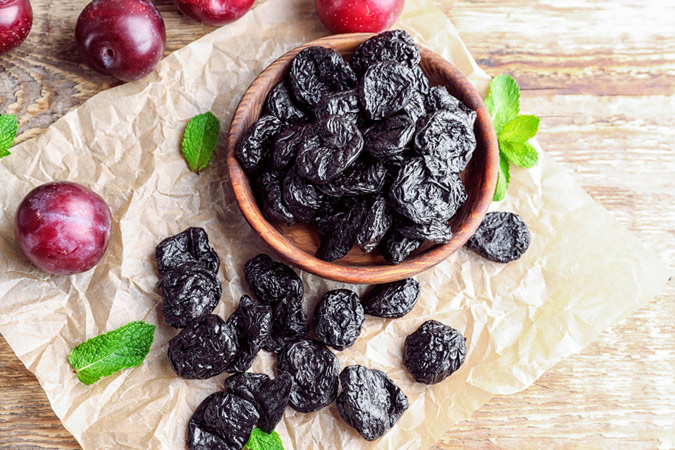
With over 7 grams of dietary Fiber per 100 grams, Prunes are one of the best sources of Fiber. Prunes have long been associated with improving digestion while also helping to keep things moving along inside your intestines. (4)
Prunes have more than just Fiber to offer. Prunes also provide a lot of potassium as well as other vitamins and minerals that your body needs to function smoothly. Sticking with whole prunes is better than buying prune juice as you get much more Fiber and less added sugar. You can also substitute raisins with prunes, so you don’t have to eat it alone. (5)
Summary
Prunes have 7 grams of Fiber per 100 grams, 28% of the Recommended Daily Value.
Raspberries

When it comes to Fiber, Raspberries are the most potent of the Berry family. Having over 6 grams for every 100 grams, Raspberries supply you with a quarter of your body’s daily requirement of Fiber. However, their fiber content is barely talked about only because Raspberries are also rich in their Antioxidant Value. In a way, eating raspberries is a double whammy because your body gets a boost on two different levels — dietary Fiber and antioxidants. (6)
Making a berry mix with Raspberries, Blackberries, and Blueberries is a great way to enjoy the benefits of all these berries. Adding strawberries might also help improve the taste. The great thing about raspberries is that you can just pop it into your mouth and you are good to go. No need for extra preparation as compared to other fruits. (7)
Summary
Raspberries have 6 grams of Fiber per 100 grams, 24% of the Recommended Daily Value.
Guavas
A tropical fruit cultivated in many tropical and subtropical regions, Guava might not be a fruit that many are familiar with. Because of the availability of the fruit, it is usually not a fruit that is currently consumed. However, if it ever is in season, you should definitely stock your refrigerator with this great tasting food. (8)
Because it is hard to find, not a lot of people know how to prepare it. Unlike bananas, which are quite easy to figure out, Guava takes some skill and knowledge to get as much meat as you can. (9)
Summary
Guavas have 5 grams of Fiber per 100 grams, 20% of the Recommended Daily Value.
Blackberries
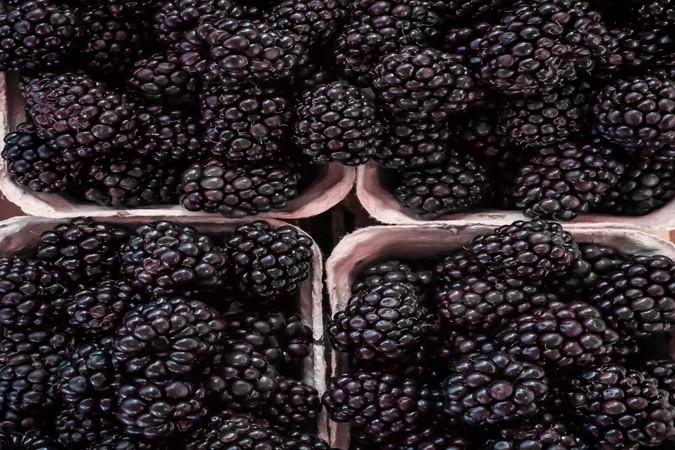
Blackberries are an underrated berry because strawberries, blueberries, and raspberries get most of the attention. However, this is a berry that you should definitely start eating a lot of. Packed with antioxidants and large amounts of dietary Fiber, Blackberries bring with them a distinct flavour that goes well with its different berry cousins. You can eat Blackberries alone, as part of a mixed berry salad or added as toppings to various snacks like yoghurt and pancakes. (10) (11)
Summary
Blackberries have 5 grams of Fiber per 100 grams, 20% of the Recommended Daily Value.
Raisins
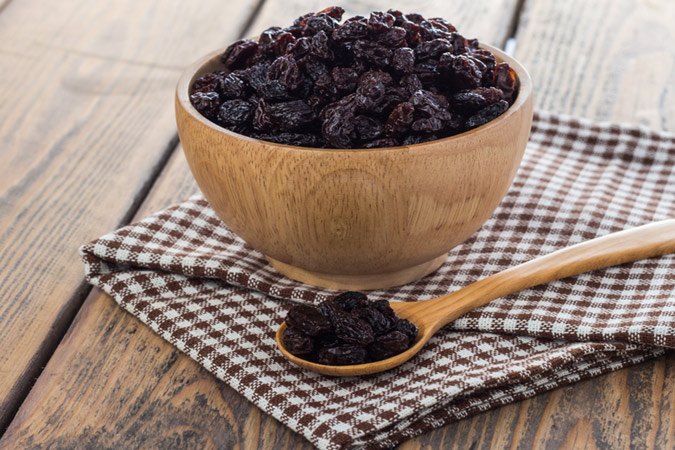
Surprisingly, raisins actually contain much more Fiber than its pre-dried state called grapes. This is good news because raisins are much more versatile and can be included in various recipes like trail mix. This makes it much easier to consume regularly. Raisins also contain a hefty amount of antioxidants, which helps your body fight free radical damage. Raisins are also naturally sweet — perfect for when you add them to recipes, you would need less sugar. (12) (13)
Summary
Raisins have 3.7 grams of Fiber per 100 grams, 14% of the Recommended Daily Value.
Pears

Pears contain high amounts of Fiber. However, when you eat pears, the Fiber is actually on the skin. This is why when you eat pears, you should ensure that you do not peel the skin off the pear to make sure that you do not get rid of the Fiber that you could’ve consumed. Pears contain a granular form of Fiber, and it would be good practice to eat a variety of fruits because each one has different characteristics and different features. (14) (15)
Summary
Pears have 3.1 grams of Fiber per 100 grams, 12% of the Recommended Daily Value.
Kiwis
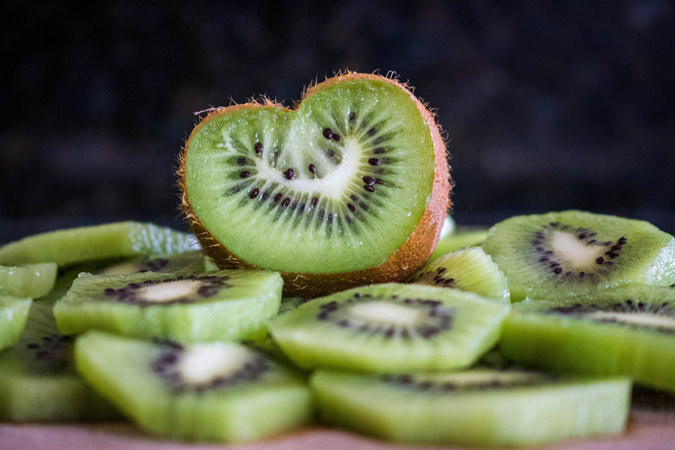
Kiwis are delicious. You can add Kiwis into your diet just to guarantee that you are getting enough Fiber in your system. Kiwis are small, so one piece is like a complete individually packaged serving. You can quickly grab a Kiwi or two, and you are already set for the entire day. A kiwi or two already meets your fiber needs. (16)
One common mistake that Kiwi eaters make is that they peel the skin off of the fruit. What this is doing is that it reduces the fiber content of the fruit by up to 50%. The same is true for Apples, Pears, and other fruits with skins. Simply just wash the fruit and eat as you would without the peel. (17)
Summary
Kiwis have 3 grams of Fiber per 100 grams, 12% of the Recommended Daily Value.
Bananas

Bananas are one of the most famous fruits in the world. It is a portable snack that you can take with you anywhere. When you feel hungry, you just have to whip it out, and you can quickly get your fiber boost of the day. Of course, bananas are more known for their potassium dose, so this is definitely one of the best fruits to eat as a snack or as topping for cereal or pancakes. (18)
Grown in over 100 countries around the world, studies have found that Americans actually consume more bananas than apples and oranges combined. Aside from its high fiber content, eating Bananas can help lower blood pressure and also reduce the risks of cancer and asthma. (19)
Summary
Bananas have 2.6 grams of Fiber per 100 grams, 10% of the Recommended Daily Value.
Apples

We are all far too familiar with the saying “An Apple A Day Keeps The Doctor Away.” This adage is mostly predicated on the fact that apples are jampacked with loads of vitamins and minerals that will definitely boost your health. (20)
For years, we have known apples as a healthy snack for the human body. Recent studies have pretty much confirmed this. When you combine apples with other fruits and vegetables, you will definitely have no trouble with reaching your daily fiber intake. (21)
Summary
Apples have 2.4 grams of Fiber per 100 grams, 9% of the Recommended Daily Value.
Blueberries

Who doesn’t love some blueberry jam as topping to a mouthwatering slice of New York Cheesecake? Just like its other Berry counterparts, Blueberries are packed not only with a high amount of dietary Fiber but also with antioxidants. As one of the more popular fruits in the world, Blueberries are high as a snack, as part of a Berry mix or as jam. Completing your daily fiber intake with Blueberries early in the morning is definitely a great way to start the day. (22)
Studies have also found that Blueberries significantly improve your cardiovascular health. Blueberries are sweet, delicious, and more importantly, nutritious. Purchased as fresh or frozen, you can enjoy blueberries any time of the year. (23)
Summary
Blueberries have 2.4 grams of Fiber per 100 grams, 9% of the Recommended Daily Value.
Vegetables High In Fiber
Corn
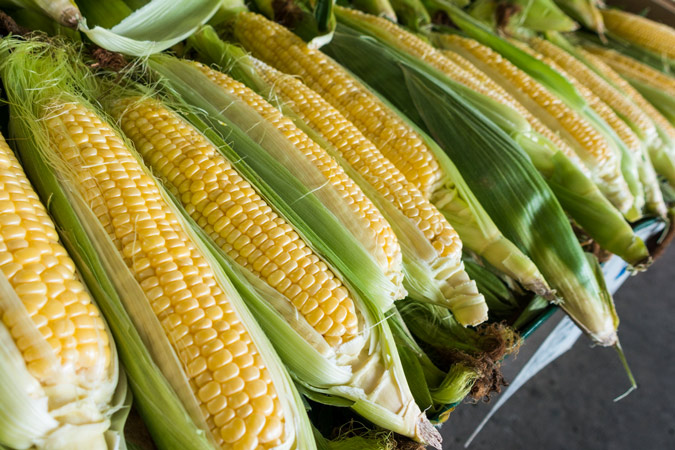
While there is still debate as to whether corn is a vegetable or not, you should always try to eat corn regularly. It has, after all, the most Fiber in 100 grams. If you are following a high fiber diet plan, corn should be one of your staple, go-to food. Corn is also a versatile ingredient that can be eaten on its own or added into different meals like salads, soups, and rice. Corn is also loaded with lutein and zeaxanthin, two phytochemicals that help improve your vision. (24)
Corn provides plenty of Fiber and is often used as the regular side dish next to a protein like chicken, beef, or pork. Corn plus meat is an excellent combination because it serves as the carbohydrate for the meal while also helping your body to digest your entire meal. Always choose organic corn, so you know it’s not loaded with GMOs the way all conventionally grown corn is. Corn can be consumed as Corn on the Cob, Soups, Bread, or Chowders. (25) (26)
Summary
Corn has 7 grams of Fiber per 100 grams, 28% of the Recommended Daily Value.
Artichokes
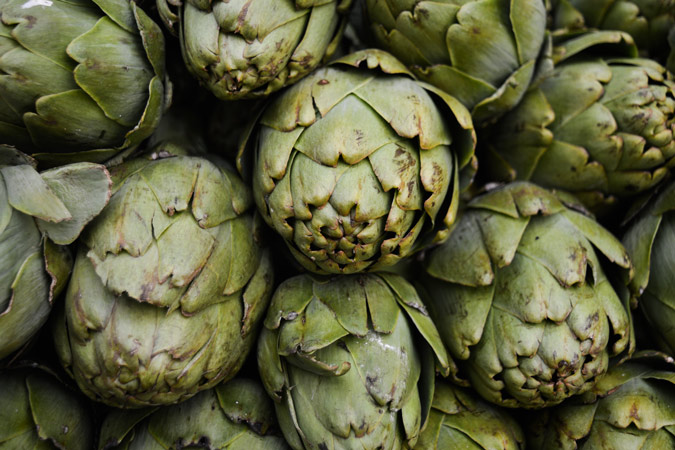
Artichokes are a good source of Fiber, but you’ll want to be particular about the kinds of artichokes that you eat. For example, preparing artichokes in a dip is not recommended as you are diluting all the proper nutrients with unhealthy ones. (27)
Grilled Artichokes are the best as they’ll be very flavourful and will retain their health benefits like its high level of Fiber and other nutrients. Double your fiber intake by adding artichokes in a salad with other high-fiber vegetables. (28)
Summary
Artichokes have 5 grams of Fiber per 100 grams, 20% of the Recommended Daily Value.
Peas

Technically, peas are legumes, but they are often eaten as a vegetable that they now count as one. Peas don’t usually get a lot of attention, but they are actually a surprising source of Fiber. Gently cooked with butter, salt, and pepper, buttered peas is one of the more popular side dishes around the world. (29)
The great thing with peas is that they actually go well with just about any main dish. Peas can easily be added to soups and casseroles, thus sneakily adding Fiber into your meals. (30) Research has shown that Peas help protect the body against chronic illnesses such as heart disease and cancer. (31)
Summary
Peas have 5 grams of Fiber per 100 grams, 20% of the Recommended Daily Value.
Mushrooms
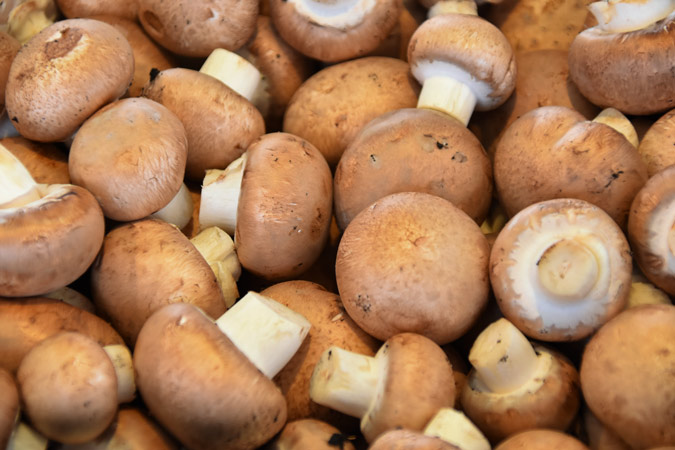
Who doesn’t like mushrooms? Mushrooms are fungi that are often eaten as a vegetable. It goes great with almost anything — soups, stews, pizza, gravy, salads, etc. Filled with Fiber and other essential nutrients but with barely any calories, mushrooms are a great staple food for those who want to go on a diet and lose some weight. (32)
Consumed since the earliest recorded history, the ancient Greeks believed that Mushrooms provided strength for their warriors who are out in battle. On the other hand, the Romans considered Mushrooms as Food of the Gods. The Chinese would also treasured Mushrooms and called them an Elixir of Life. (33)
Chanterelle mushrooms top the list for having the highest fiber content. Portobello and shiitake mushrooms are also great providers of Fiber. Just make sure that you don’t eat mushrooms as topping on pizza if your main reason to eat them is to shed some pounds. Instead, add them to a salad, soup or another healthy main entree. (34)
Summary
Mushrooms have 3.8 grams of Fiber per 100 grams, 15% of the Recommended Daily Value.
Brussel Sprouts

Brussel Sprouts might not be the most famous vegetable on the planet for its taste, but they are jampacked with a lot of good nutrients and minerals. They contain a decent amount of Fiber, so it would be for your best interest to develop a taste for them early on. In addition to becoming a great source of Fiber, Brussel Sprouts also provides you with a full day’s supply of Vitamin C that can help with your immune system. (35)
Brussel Sprouts pack just the right amount of Fiber into such a small package. Aside from treating your digestive system right, you will also be boosting your immune system. (36)
Cruciferous vegetables are all over this list because being high in Fiber is just one of their characteristics. They’re often connected with anti-cancer research due to their combination of Fiber, antioxidants, and minerals. It’s good to become familiar with them and try to eat one veggie from this family each day for variety. (37)
Seasoned well and grilled up during the spring or summer as a healthy addition to your barbecue fare or brisket, Brussel Sprouts can surely be a vegetable that you can enjoy.
Summary
Brussel Sprouts have 3.8 grams of Fiber per 100 grams, 15% of the Recommended Daily Value.
Sweet Potatoes

Aside from being one of the highest fiber foods, Sweet Potatoes also contain beta-Carotene — a powerful antioxidant linked to improved eyesight while also helping avoid cancer and heart disease. (38)
Sweet Potatoes are processed slowly by the body, which means that you feel full for an extended period, making it a great staple food in weight-loss regimens. Your digestive system will also get a lot of help from all the Fiber that you will be eating. Baking a sweet potato is as easy as can be, and it makes a great companion to a serving of protein like salmon, chicken, or beef. (39) (40)
Sweet Potatoes, compared to their white counterparts, are less starchy, which is excellent as it helps balance your sugar levels in your blood while also keeping you feel satisfied longer.
Summary
Sweet Potatoes have 3 grams of Fiber per 100 grams, 12% of the Recommended Daily Value.
Beetroots

High in Fiber, Beetroots should be part of your regular diet. It is best if you prepare Beetroots in a healthier manner. (See: Health Benefits of Beets) This means that you shouldn’t get the processed, pickled beets in the market. Beetroot Juice has also been found to be able to reduce the risk of hypertension and vascular inflammation that comes with ageing. (41)
By baking or grilling it, you can get a good dose of Fiber along with plenty of vitamins and minerals, including a unique antioxidant called betalains which give beetroots its classic colour. There are a lot of available recipes for Beetroots that you can enjoy so you can get your daily dose of Fiber in a more fun and tasty way. (42)
Summary
Beetroots have 2.8 grams of Fiber per 100 grams, 11% of the Recommended Daily Value.
Carrots

Carrots are much more known as a source of beta Carotene, but another nutrient that it provides is dietary Fiber. Known as one of the most notoriously healthy foods, Carrots are better eaten as a solid food instead of Carrot juice whose Fiber was already mostly stripped away from the processing. (43)
Containing very little fat, Carrots are also filled with Iron, Potassium, Vitamin K1, and antioxidants. Because of its low-fat content and crunchy texture, Carrots are an excellent snack for people who are looking to lose weight. (44) There are a lot more health benefits with eating Carrots, such as lowered cholesterol levels, improved eye health, and antioxidants. (45)
Summary
Carrots have 2.8 grams of Fiber per 100 grams, 11% of the Recommended Daily Value.
Broccoli

Broccoli is one of those super vegetables that has almost all of the nutrients that your body needs. If you do not eat Broccoli, you should consider stuffing yourself with it. Packed with Fiber, protein, plenty of Vitamin C, Vitamin A, and Potassium among other essential nutrients, Broccoli goes well as a side dish or as an accompaniment to soups, stews, and salads. (46) (See: 27 Stunning Broccoli Recipes That Even Kids Can’t Resist) Studies have also linked Broccoli to fighting everything from heart disease to cancer. Because of its high dietary fiber content, Broccoli is also known to help people lose weight. Broccoli is also easy to prepare, thus making it the perfect fiber food for busy professionals who are always on the go. (47)
The overall nutritional makeup of Broccoli makes it an excellent vegetable to add to your regular menu. If you do not like the taste of Broccoli, you can just mix it with other herbs or put it in a casserole where the taste can get lost in the shuffle of things. (48)
Summary: Broccoli has 2.6 grams of Fiber per 100 grams, 10% of the Recommended Daily Value.
Spinach

Popeye got something correct. Spinach is a superfood. The cartoon sketch featured the protagonist as eating a can of Spinach just before a fight. This then gives Popeye the Sailor Man superhuman strength which allows him to win whatever scuffle he gets himself into. Fiction does not turn far away from fact as studies have found that Spinach boosts muscle power mostly from its iron content. (49) Spinach is known for having Iron, Magnesium, Protein and Fiber in it. Just 100 grams of this inexpensive, leafy vegetable already fill up 8% of your daily Fiber needs aside from filling up some of your Protein, Calcium, Iron, Magnesium, Potassium, Vitamin A and Folate intake. (50)
Instead of focusing on eating just one or two of the high-fiber food every day, you should aim for a well-balanced diet that will wholly fulfil your body’s dietary needs. Buying fresh Spinach and adding it into most of your meals would sneakily increase your consumption without you have to worry about eating leafy greens. (51)
Summary
Spinach has 2.2 grams of Fiber per 100 grams, 8% of the Recommended Daily Value.
Cabbages

Cabbage is a vegetable that is often regarded for its high fiber content. This is a magical vegetable that is used by many who are looking to lose weight. It is also considered to be an anti-cancer food. (52)
The taste of cabbage can get quite, thus making you less likely to stick with healthy eating. There are plenty of cruciferous vegetables that provide similar benefits and taste different to keep your palate interested. You can always mix all these vegetables and turn it into a salad. Toss some vinaigrette, and you got yourself your daily fiber boost. (53)
Summary
Cabbages have 2.2 grams of Fiber per 100 grams, 8% of the Recommended Daily Value.
Asparagus
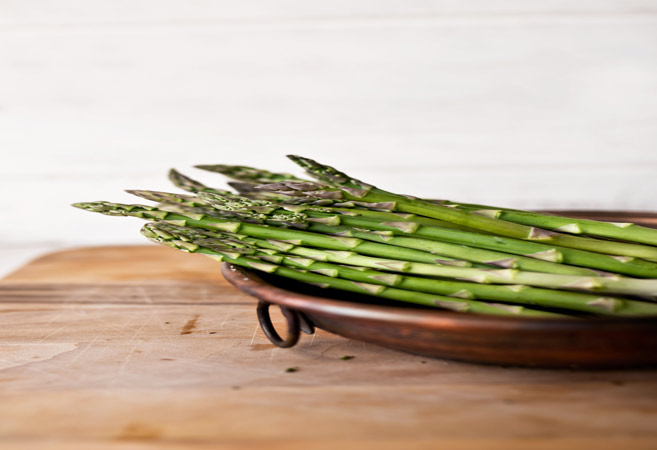
Asparagus may not have as much Fiber as the rest of the vegetables, but the great thing about Asparagus is that when you eat it, you are also providing your body with a broad range of vitamins and minerals that would help your body in its goal to become healthy. (54)
Summary
Asparagus has 2.1 grams of Fiber per 100 grams, 8% of the Recommended Daily Value.
Navy Beans

Beans provide plenty of Fiber for your body. Black Beans, Chickpeas, Lima Beans, are excellent sources but the one that tops the list are Navy Beans. Navy Beans have a lot of versatility when you’re looking to supplement your diet with high-fiber food that tastes good. (55) (56)
Another benefit of beans is that they are digested slowly by the body, which makes them a great addition to any meal. It keeps you feel full for a more extended time while also balancing your blood sugar to manage diabetes. (57)
Aside from Fiber, beans are also a great source of Magnesium, Calcium and Iron, which makes them an excellent addition to any meal. (58)
Summary
Navy Beans have 10.5 grams of Fiber per 100 grams, 40% of the Recommended Daily Value.
Lentils
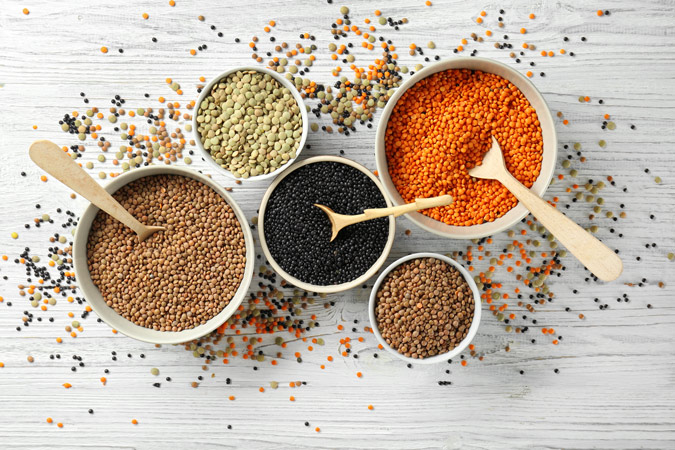
Another vegetable that is gaining popularity because of the discovery of the many health benefits that it provides is Lentils. When you talk about Lentils, often the only version that you can think of is Lentil soup. However, Lentils have so much more potential to offer. They can be used as a side dish to round out any protein entree that you cook up. (59)
In addition to the Fiber, they bring to the table, lentils are also a good source of protein and are a “slow-carb” — a carbohydrate source that your body will break down gradually, helping you feel satiated and helping prevent spikes in your blood glucose level.
Cooking up big batches of Lentils then store the leftovers in the refrigerator would be great as you can quickly add them to your meals the entire week. Lentils make the perfect side dish while also adding bulk and texture to soups and stews. (60)
Summary
Lentils have 8 grams of Fiber per 100 grams, 32% of the Recommended Daily Value.
High Fiber Snacks
Fiber is an incredibly essential food that should be a major part of your diet. It is the indigestible part of plant-based foods such as vegetables, fruits, grains, beans, and legumes.
Fiber is a carbohydrate that helps aid with keeping your digestive system healthy. (61) Undigested, Fiber stays inside your colon where it allows good gut bacteria and eliminating any harmful ones. (62)
Increasing your Fiber intake is important as studies have found that Fiber is countless benefits. For starters, Fiber aids in a lot of weight loss programs. (63) The addition of Fiber into the diet can also lower blood sugar levels and fight digestive problems such as constipation. (64) (65)
Fortunately for you, Fiber is relatively easy to incorporate into your diet even with just snacks. The Recommended Daily Intake of Fiber for an adult man is 38 grams while an adult woman needs about 25 grams. (66)
Summary
Here are some of the High-Fiber snacks that you can easily make at home to double your daily Fiber consumption.
Kale Chips
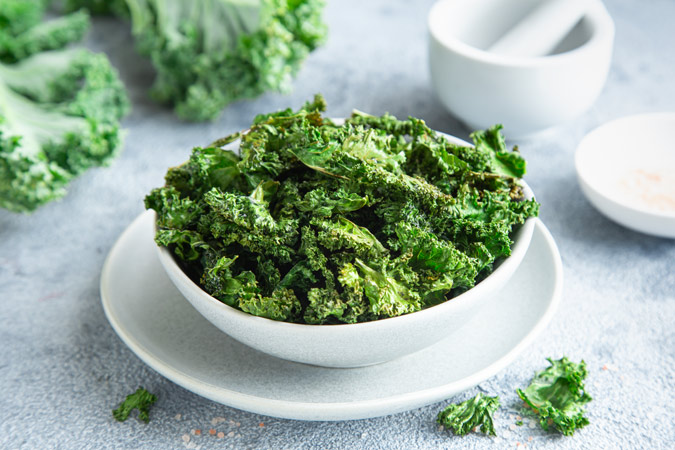
Nothing is more satisfying than stuffing your mouth with a handful of crunchy chips. A bag or two of potato chips while watching TV. A perfect night capper anyone? Unfortunately, potato chips are very much unhealthy. Filled with oil, sodium, and carbohydrates, many have gained dozens of pounds thanks to this crunchy snack. However, you would be delighted to know that there are now alternatives that you can make instead.
Kale chips are one of the most effortless snack alternatives that you can make. In addition to the dietary Fiber that they provide, you are also getting vitamins, minerals, and protein. Kale is a popular vegetable from the cabbage family that has gained a lot of popularity due to their nutritional benefits. Kale also fights free radical damage thanks to the phytonutrients it contains.
Unlike many of the snacks that you have encountered, Kale chips provide you with Iron, Magnesium, and Potassium. When you eat a 100-gram serving of Kale Chips, you fulfil 8% of your daily fiber needs.
Just like potato chips, you can season and spice them up with whatever seasoning powder you want. You can never go wrong with salt and pepper, but if you’re going to make a bolder chip, you can try adding taco seasoning or a packet of ranch seasoning.
How To Make Kale Chips:
You’ll be blown away by how easy it is to make kale chips. It really is just a matter of coating them with olive oil, seasoning them up and popping them in a 300-degree oven until they’re done. You don’t want to set the oven too high as the edges of your Kale Chips will burn and dry out. They should come out crispy and crunchy like a potato chip. Toss the chips with the flavouring of your liking and enjoy!
Quinoa Qurunchies
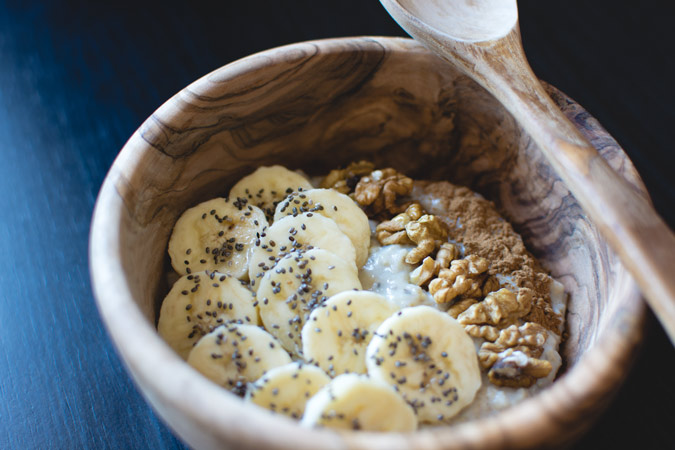
As mentioned above, Quinoa is an excellent source of Fiber. Combined with Bananas, which is another quality source of Fiber, having Quinoa Qurunchies is a robust way to start the day. A high-fiber snack that tastes good, Quinoa Qurunchies is a powerhouse when it comes to providing Fiber and other essential vitamins and minerals like Iron, Magnesium, and Potassium.
How To Make Quinoa Qurunchies:
Cook your Quinoa first. Once it is well cooked, you need to roast both of your Quinoa and bananas. For the bananas, cut them lengthwise and then bake them right in their peel. Once they are properly browned, remove them, and let them cool completely.
By this time, your bananas should have lost some of its natural moisture and browned up a little. The natural sugars in the banana would have caramelized a bit and make it a little sticky. The stickiness is essential as you have to roll your bananas on the roasted Quinoa. If the Quinoa doesn’t stick, use a little honey. Stick your bananas into the fridge, cut them up and you already have a bite-sized treat that you can have any time of the day.
Flax Snax Mix

Flax provides the body with a load of Fiber. It also provides you with a good source of protein and Omega-3s. Making a Flax Snax Mix is easy, and you can definitely create a big batch just so you can have something to eat whenever you get the urge for something crunchy and delicious.
Flax Snax Mix is perfect for snacky people who want to lose weight. Ground Flax Seed is pretty much undetectable as far as the mouthfeel goes while still able to provide a subtle nutty flavour which goes well with several different types of food.
As a side note, you can keep a bag of ground flaxseed in your kitchen and just add them to your cooking. This is a sneaky way to include more Fiber into your diet as it goes well with soups, as a salad topper and even with a chicken breast. When you do this, you are immediately boosting the nutritional value of your dishes.
How To Make Flax Snax Mix:
Get a Ziploc bag and pour your favourite trail mix into it. Add some honey and lemon juice. Shake it up until the trail mix is entirely coated. Pour in the flaxseed and shake again. Your trail mix will now have a coating of sweet honey, sour lemon and nutty flaxseed dramatically doubling not only its flavour but also its fiber content.
Sweet Potato Chips

Compared to White Potatoes, Sweet Potatoes have much more Fiber and contain more essential vitamins and minerals like beta Carotene and tons of Vitamin A, so all things considered they make a much better choice for your snacking pleasure than regular potato chips.
Using a mandoline slicer automatically give you the size and shape of a chip, which makes it very easy to work with. Make sure that all the chips are uniform in size so that everything is baked perfectly. We recommend using a mandoline as cutting by hand leads to irregular sizes, which means when you cook them, some of the chips will be crispy while some are still raw.
How To Make Sweet Potato Chips:
Slice up your Sweet Potatoes using a mandoline slicer for best results. Toss your Sweet Potato slices in olive oil and sea salt then bake them in a 400-degree oven for 20-25 minutes, or until crispy. The actual baking time will vary depending on the thickness of your slices. Flip them every 10-minutes. Once you’re satisfied with their crispiness, take them off the oven, and allow to cool. Sprinkle some salt and pepper and enjoy!
Guacahummus
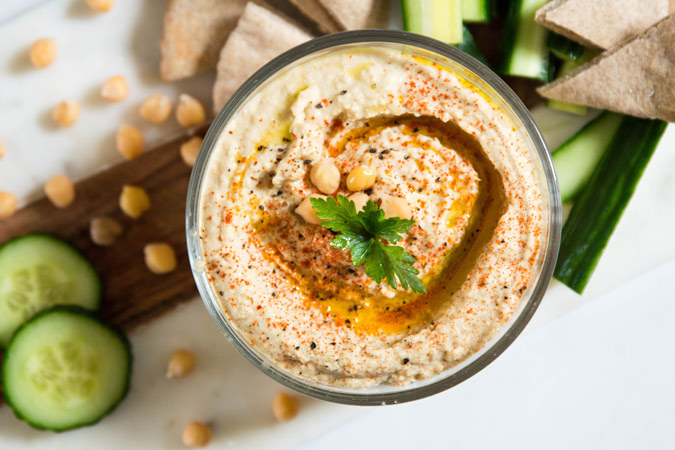
Guacahummus is a hybrid dip created by combining equal parts of guacamole and Hummus. Avocados are one of the healthiest fruits that you can eat. Rich in Fiber, Potassium, monounsaturated and polyunsaturated fats, Avocados is a sure superfood that you can combine with chickpeas to create the ultimate high-fiber dip.
Guacamole and Hummus are two of the most popular dips in the world of snacks. Their flavour and textures make them a great way to enjoy a, so we thought, why not mix the two up and create the perfect dip?
Avocado and Chickpeas have a lot to offer, but together, they make a tasty combination jampacked with vitamins and minerals. One thing is for sure, though, they provide a high amount of Fiber. A 100-gram serving of Avocado gives 7 grams of Fiber while a 100-gram serving of Chickpeas gives a whopping 17 grams.
How To Make Guacahummus:
The easiest way to make Guacahummus is to add an Avocado, a can of organic Chickpeas, a Tomato, and a Garlic clove into a blender. Mix until they are thoroughly blended. Squeeze a wedge of lemon onto the mixture and give it one last mix. Enjoy with a high-fiber whole grain tortilla chip or crackers. This is a great party snack which will definitely boost your guests’ fiber content.
Fiber Bars

A Fiber Bar is a great way to get more Fiber into your body after a great workout. While Fiber Bars can be bought from most grocery stores immediately, it would still be great for you to make your own. This is much better as you can control what goes into your fiber bar. When you hand-pick your ingredients, you can incorporate higher quality items.
Each of the ingredients contains plenty of Fiber, but when mixed together, you are basically creating the ultimate Fiber snack. Another benefit of hand-picking your ingredients is that you can ensure that there are no artificial sweeteners and preservatives that are in most store-bought fiber bars.
We’re using a mix of almonds for crunchiness, smooth peanut butter to round out the flavour, flaxseed because of its Omega-3 content as well as fiber boost, bananas for texture and additional Fiber, flaxseed and oatmeal because it adds even more Fiber while making the whole thing seem like a bar.
Ingredients:
- 1/2 cup organic Peanut Butter, smooth style
- 1/2 cup ground Flax Seed
- 1 cup organic instant oatmeal, plain
- 1 Banana, very ripe
- 1 tbsp raw, organic honey
- 1/2 cup crushed Almonds
How To Make Fiber Bars:
Combine all of the ingredients in a huge bowl and mix them until they are evenly distributed. The result should be something akin to a batch of cookie dough. At this point, you should spread it out in an ungreased 13×9 glass baking dish. This size gives it the proper form and lets you make nine 4×3 inch sized bars pretty quickly. Place in the refrigerator until its cold, and the ingredients are set. Cut up and enjoy. If you are a sweet tooth, you can melt some dark chocolate and dip your fiber bars into it.
Smooth Move Smoothie

A smoothie is a fast and easy way to quickly curb any cravings, to keep you satisfied, or to tide you over until your next meal. Most smoothies are a great source of Fiber given their composition of fruits and vegetables. If you are looking for a high-fiber snack, you can quickly whip up a smoothie to boost your daily fiber intake.
A quick scan of Instagram will tell you that the green smoothie revolution is upon us. This is because most smoothies have kale and Spinach added in them, giving them their vibrant green colour.
This smoothie will be mixing heavy hitters when it comes to fiber content. The Spinach and banana alone put you well on your way on reaching your recommended daily value. The banana, flaxseed and peanut butter help boost your fiber content even more.
Ingredients:
- 1/2 bunch Spinach
- 1 tbsp Flax Seed
- 1 Banana
- 1/2 cup Frozen Strawberries, or fresh if in season
- 1/2 cup Peanut Butter, smooth
- 1 tablespoon Dark Cacao Nibs (optional)
- Ice (if using fresh strawberries)
How To Make Smooth Move Smoothie:
Like any smoothie, it’s just a matter of cramming everything into your blender and letting it do the heavy lifting. Blend it to smithereens, and drink it down. You may want to savour it, as the strawberry, chocolate, peanut butter, banana mix all but neutralizes the taste of the Spinach.
Other High Fiber Food
Whole Wheat Bread
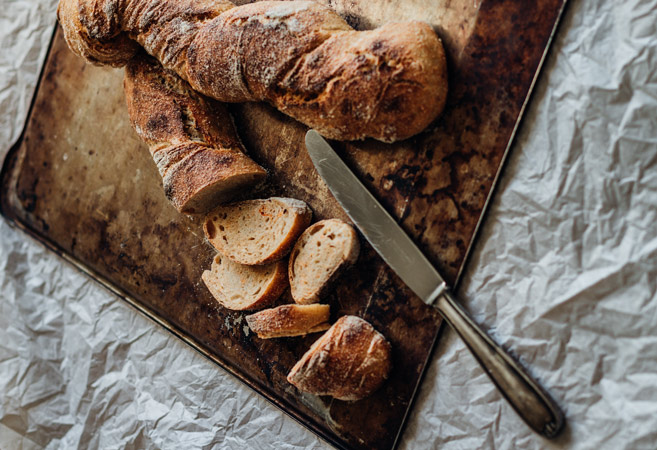
Whole Wheat Pita Bread is a whole lot better than white bread. It is a better source of protein while also having additional benefits that make it much more preferable than regular white bread.
When you opt for whole wheat pita bread, you get more protein and Fiber, which helps you reach your daily protein and fiber goals. Many popular diet regimes are banning food made from grains claiming that they are not part of the natural human diet.
Of course, grains were only introduced when humanity started agriculture, farming, and cultivating crops, which over time has brought us bread. However, countless extensive studies have discovered that grains can be beneficial to the body as long as your body is not sensitive to gluten. Whole Wheat Pita Bread also has fewer calories and carbohydrates than white bread, which makes dieting easier.
Summary
Whole Wheat Pita Bread has 7 grams of Fiber per 100 grams, 28% of the Recommended Daily Value.
Quinoa

Known as one of the best substitutes for rice, Quinoa is a fiber-rich superfood filled with vitamins and minerals. It has gained popularity over the recent years as many dieticians have recommended it as a replacement for carbohydrate-heavy grains like rice and couscous.
Quinoa contains more Fiber than couscous, Rice and Broccoli. Easy to make and takes on so much flavour, it is no surprise that Quinoa has become one of the staple food of the majority of those who are trying to lose weight.
Aside from its fiber content, Quinoa is also known for being rich with Protein, Magnesium, and Iron. (See: Good Reasons To Eat A High Protein Diet) You can use Quinoa on a variety of dishes — mix it in soups, as a crust on steaks, or as a replacement for rice.
Summary
Quinoa has 2.8 grams of Fiber per 100 grams, 11% of the Recommended Daily Value.
Whole Wheat Pasta

Just like Whole Wheat Bread, Whole Wheat Pasta has better nutritional value than its traditional counterpart. The taste and texture of whole wheat pasta may require a bit of getting used to, but there are so much health benefits that we guarantee that it is worth switching to whole wheat.
Pasta is known for being on the heavy side when it comes to carbohydrates. This was news that broke many hearts. Fortunately for pasta lovers, myself included, there exists an alternative — whole wheat pasta.
Whole Wheat Pasta contains much more Fiber than regular pasta which allows for better digestion. Whole Wheat Pasta also goes through less processing steps, which saves much more nutrients than regular pasta.
Summary
Whole Wheat Pasta has 4.5 grams of Fiber per 100 grams, 18% of the Recommended Daily Value.
High Fiber Diet Recipes
Pearled Barley Risotto with Fresh Asparagus and Mushrooms
Barley is a great source of fiber and does a really good job of keeping you satisfied long after the meal is finished. Making it into Risotto is no small feat but when you follow this recipe, you can easily finish it off. Combining Barley into mushrooms will add more fiber to the meal while basil is an antioxidant-rich herb that lends the dish its classic Risotto flavour.
This could be eaten as a light lunch or as a side dish at dinner. With over 10 grams of fiber in a 100-gram serving, you are looking at taking off a big chunk out of your daily fiber requirement. And in a very tasty way! (See Recipe: Pearled Barley Rissoto with Fresh Asparagus and Mushrooms)
Roasted Vegetable and Black Bean Tacos
These tacos are absolutely delicious and are great for vegetarians as they don’t have meat in them. You’re getting the delectable taste of roasted vegetables mixed with black beans and served on corn tortillas. Each element of these tacos is full of fiber — from the sweet potatoes to the black beans and even the corn in tortillas.
There are Ro-Tel tomatoes used in it so it’s going to take a bit of kick but the Avocado does a good job of cooling things off while supplying the dish with the Avocado’s signature healthy fats, potassium, and even more fiber. (See Recipe: Roasted Vegetable and Black Bean Tacos)
Creamy Chicken and Vegetable Soup
This hearty soup recipe is perfect for when you are sick and just want a bowl of comfort food. When you create this recipe, you will realize that the ingredients that go into this soup are mostly fiber-enriched making it a super-fiber soup.
The recipe calls for an entire head of a cauliflower which not only makes the soup creamy but also adds 3 grams of Fiber for every serving. Aside from that, there are Carrots, Turnips, Celery, and Edamame. The edamame provides an additional 2 grams per serving guaranteeing over 5 grams of fiber for every bowl you eat. This soup is sure to be something you will never forget and will always crave for whether you are sick or not. (See Recipe: Creamy Chicken and Vegetable Soup)
Lentil Stuffed Peppers
As mentioned in the list above, Lentils are an excellent source of Fiber. They also make a great stuffing choice for peppers. Each green pepper provides the body with over 2 grams of fiber which is a huge addition to your overall Fiber consumption.
On the other hand, the amount of Lentils stuffed in each pepper gives over 8 grams of Fiber. This means that one Lentil Stuffed Pepper is guaranteed a minimum of 10 grams of Fiber. Since the daily recommended amount for an average male is at least 38 grams of Fiber, just consuming one Lentil Stuffed Pepper fulfils over a quarter of that. With how tasty this snack is, I’m pretty sure you will eat much more than just one stuffed pepper. (See Recipe: Lentil Stuffed Peppers)
Crunchy Veggie Wraps
Say goodbye to soggy and soft veggie wraps. This recipe promises a veggie wrap with a guaranteed crunch. Each ingredient already provides you with a lot of Fiber but the sum is greater than its parts. In this meal, you will get whole grain wraps which is already a huge boost to your daily Fiber intake. Add to that Green and Red Bell Peppers, Avocados, and Hummus and you get a super-fiber meal.
So where’s the crunch, you ask? It’s in the sunflower seeds. Aside from its healthy fats and Protein, sunflower seeds also provide additional Fiber. Even a meat eater will surely not ask for meat once they get a bite of this veggie wrap. (See Recipe: Crunchy Veggie Wraps)
Black Bean and Sweet Potato Tostadas
This Mexican-inspired dish provides you with a delicious way of incorporating Fiber into your diet. Black Beans are a tasty form of Fiber. The same can be said for sweet potatoes. Put them together and you’ve got yourself a winner when it comes to a delicious high-Fiber meal.
You can go a step further and make sure that your tostada shells are made from whole grains. Fiber has a bad reputation of being bland and feels like you’re being forced to eat it rather than you voluntarily eating them. However, when cooked right, it can truly be an enjoyable experience. (See Recipe: Black Bean and Sweet Potato Tostadas)
Healthy Homemade Dark Chocolate Peanut Butter
This recipe allows you to get Fiber into your system while feeling like you are still having a treat. The decision to eat healthy sometimes comes with the consequence of eating bland, unflavoured food. However, this is a common misconception. This Homemade Dark Chocolate Peanut Butter is just one example of a tasty fiber boost.
This recipe calls for dark chocolate, a food that many health experts recommend you eat regularly. Dark chocolate is loaded with antioxidants while natural peanut butter is filled to the brim with fiber.
Adding coconut oil and stevia extract can make this taste even better. Spreading this on whole grain crackers or toast will make a tasty snack that’s filled with fiber. (See Recipe: Healthy Homemade Dark Chocolate Peanut Butter)
Asian Roasted Broccoli & Red Peppers
There is no question as to whether Broccoli is healthy or not. Experts have constantly suggested Broccoli to be a part of your diet. The only problem with it is that the usual method of cooking Broccoli (Blanching, Steaming or Boiling can be a bit bland. This makes it harder to consume on a regular basis.
However, this recipe makes Broccoli taste so good that you will start to crave it at any time of the day. The red bell peppers together with the Broccoli will definitely give you the fiber boost that you need. This tasty side dish can pack some heat but you can limit the sriracha if you are not a fan of spiciness. (See Recipe: Asian Roasted Broccoli & Red Peppers)
Grain-free Banana Bread Protein Cake
You can have cake while also giving you the fiber that you need! This banana bread is made of whole grains and is filled with fiber from the Banana and Walnuts inside. You can also add Protein powder which makes this a surprisingly satisfying cake that provides plenty of flavor without the sugar crash later.
This recipe has a much higher fiber amount than regular banana bread. This perfect for those times that you want to eat dessert but do not want to derail all of your healthy eating progress. (See Recipe: Grain-free Banana Bread Protein Cake)
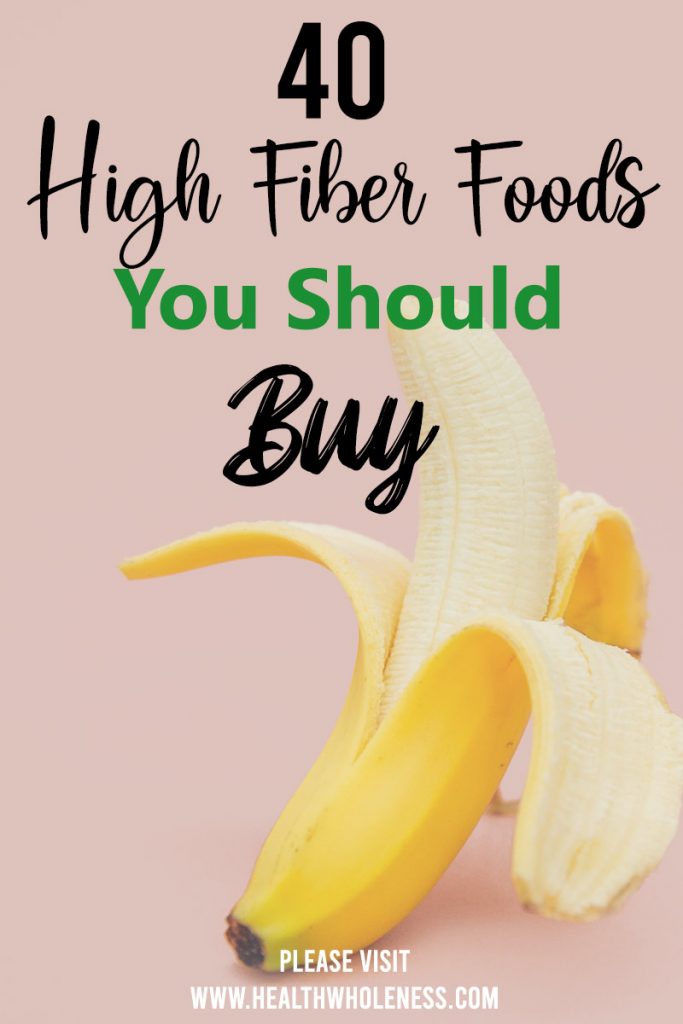
Conclusion:
Cooking your own meals and snacks is preferable to ordering takeout from fast food chains and restaurants. Aside from being more cost-efficient, making meals at home would allow you to handpick all of the ingredients thus guaranteeing that whatever you’re putting inside your body is fresh and healthy. Take the time to study all of your
Fiber is excellent for your body. It helps maintain the status quo of your body’s functions like passing off toxins. There is strong scientific evidence that Fiber helps lower the risk of heart disease, stroke, type 2 diabetes, and bowel cancer.
High-fiber foods also make the body feel fuller, which helps a lot with dieting. When you feel full all the time, you will also feel less compelled to eat more frequently, which limits your calorie intake. Fiber also helps with digestion and prevents constipation guaranteeing that your bowels pass fast and quick. (67)



